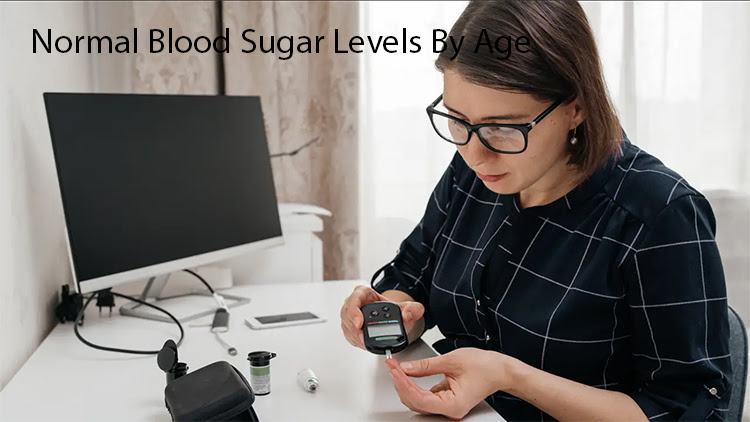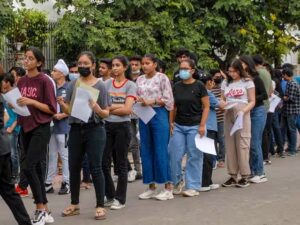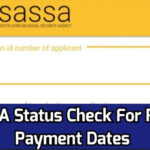Normal Blood Sugar Levels Maintaining healthy blood sugar levels is critical for overall well-being, and it’s essential to be aware of the ideal range for your age group. Although these targets differ among individuals based on factors like age, health conditions, and lifestyle choices, knowing the typical ranges can offer valuable information about your body’s functioning.For instance, adults over 60 years old should aim for a fasting blood sugar level between 90-130 mg/dL, while children and young adults should have levels under 100 mg/dL. Keeping blood glucose levels within the desired range can help prevent complications such as nerve damage, vision loss, and kidney disease.
Furthermore, maintaining a healthy diet and active lifestyle can help stabilize blood sugar levels and improve overall health. It is crucial to monitor blood sugar levels regularly and seek medical attention if they fall outside the recommended range. It is important to emphasize that the information provided is intended as a general guide. If you have any worries about your blood sugar, it is important to consult your healthcare provider for a thorough evaluation. There is no single “normal” blood sugar level, as your ideal number is influenced by various personal health and lifestyle factors. Read on to discover more about blood sugar, its connection to overall health, the normal range of levels, and indications of abnormal blood sugar.
Outlines Of Guide
ToggleWhat Is Blood Sugar?
Glucose, also known as blood sugar, is the main form of sugar in the body, derived from carbohydrates in food. It is crucial for supplying energy to cells all over the body, including the brain cells. Throughout the day, your blood sugar level changes due to eating, exercising, and sleeping, as well as the impact of stress and hormones. It’s important for individuals with diabetes to closely monitor their blood sugar levels to keep them within the recommended target range, which is typically determined by a healthcare professional.
A blood sugar level that is not within the target range can have significant impacts on health. Brenda Peralta, a registered dietitian and certified diabetes educator at FeastGood.com, explains that both high and low blood sugar levels can lead to severe health issues like nerve damage, kidney damage, and heart disease. She explains that elevated levels of blood sugar (hyperglycemia) can result in conditions such as diabetes, cardiovascular disease, and stroke. Conversely, low blood sugar (hypoglycemia) can lead to symptoms like confusion, anxiety, weakness, sweating, and vision issues. Severe hypoglycemia may lead to seizures and fainting.
Why Does Blood Sugar Matter With Diabetes?
Diabetes is a health condition that hinders the body’s ability to independently regulate glucose levels. Individuals with diabetes either have insufficient insulin production or insufficient availability of insulin for use. Insulin is a hormone that assists the body in utilizing glucose for energy, and when insulin levels are inadequate, glucose can build up in the bloodstream and cause harm to organs and tissues.
“According to Jennifer Meller, M.D., chief medical officer at Sweetch—a digital health care innovation company based in Tel Aviv, Israel, diabetes happens when the body is unable to properly regulate the sugar consumed in our regular diet. Prolonged high sugar levels can cause alterations in both major and minor blood vessels.”
Dr. Meller explains that alterations in large blood vessels can elevate the risk of heart attack and stroke over time, while damage to small vessels can result in nerve damage, vision loss, and kidney failure. Maintaining healthy blood sugar levels is crucial for individuals with diabetes to prevent future health complications, requiring an understanding of target glucose levels for various age groups and corresponding lifestyle adjustments due to fluctuating blood sugar levels influenced by dietary choices and other factors.
What Is an A1C Number?
The A1C test, also known as glycosylated hemoglobin, is a diagnostic tool used to measure blood sugar levels over the previous three months. It is crucial for assessing how well blood sugar has been controlled during that time frame, particularly for diabetes management. This test provides a long-term view of blood sugar levels and can help predict the risk of complications associated with diabetes. Regular A1C tests are recommended for individuals with diabetes to monitor their blood sugar levels and assess the effectiveness of their treatment plans. This, along with medication and lifestyle changes, can significantly improve the quality of life for those living with diabetes by reducing the risk of complications.
The A1C test uses a small blood sample to measure the amount of hemoglobin in red blood cells that binds to glucose molecules. This test is commonly done with a finger prick in the doctor’s office and is expressed as a percentage. The higher the glucose levels in your bloodstream, the more hemoglobin will bind to it and be detected by the A1C test. An A1C reading between 4% and 5.7% is considered healthy for someone without diabetes. A value between 5.7% and 6.4% indicates prediabetes, while 6.5% and higher are indicative of diabetes. Regular monitoring of A1C levels can help individuals manage their blood sugar levels effectively and prevent complications associated with diabetes. It is advisable to consult a healthcare professional for proper diagnosis, interpretation, and management of A1C values.
While A1C is a crucial number to monitor for individuals with diabetes, it may not always provide an accurate reading due to other medical conditions like anemia. This is why doctors often recommend looking at additional numbers such as fasting glucose levels alongside the A1C number to better understand one’s overall health status. Fasting glucose levels provide an indication of how well the body regulates blood sugar levels in the short term, and when combined with the A1C number, they can offer a more comprehensive view of a person’s diabetes management. It is important to consult with a healthcare provider to determine which numbers are most relevant for specific individuals based on their medical history and health goals.
How Is Blood Sugar Tested?
Blood sugar levels are commonly measured using a glucometer, which assesses the concentration of glucose in a blood sample. A small drop of blood from the finger or arm is applied to a test strip and then inserted into the glucometer. The results are promptly displayed on the device’s LCD screen. Alternatively, continuous glucose monitoring (CGM) involves placing a disposable, water-resistant sensor on the back of the arm or stomach. These sensors can be scanned with a reader and are typically worn for a period of three to 14 days. Many CGM sensors are compatible with smartphones, allowing users and caregivers to track glucose trends over the past eight hours.
For individuals living with diabetes, monitoring their blood sugar levels is crucial for managing their condition. Typically, people with diabetes check their glucose levels multiple times a day, including before meals and snacks and two hours after eating. In addition to regular checks, doctors may also order other tests such as fasting glucose or oral glucose tolerance tests. These tests measure the glucose levels in the blood at specific times, either after a period of fasting or after consuming food. Accurate and timely monitoring of blood sugar levels can help individuals with diabetes make informed decisions about their diet and medication, and ultimately improve their overall health outcomes.
When to Test Blood Sugar
Monitoring blood sugar levels is an integral part of managing diabetes. Although standard times to test blood sugar are before meals and before bedtime, it can vary depending on the individual’s condition. For instance, some people may be required to test their blood sugar levels two hours after eating or in the middle of the night. It is essential to consult with your doctor to determine how often you need to test your blood sugar, based on your specific health needs. Your doctor can recommend a testing schedule that works best for you and help you maintain optimal blood sugar levels. Regular monitoring of blood sugar levels can help prevent complications associated with diabetes and improve overall health outcomes. Additional situations in which an individual might contemplate testing their blood glucose levels comprise:
- When experiencing symptoms of low blood sugar, such as dizziness, sweating or confusion
- After dining at a restaurant or trying new foods
- When feeling sick
- When experiencing stress
- While consuming alcohol
- Before and after exercising
- When starting a new medication
- After taking too much insulin or diabetes medication
- After taking diabetes medication at the wrong time
Normal Blood Sugar Levels By Age Children, Adults And Seniors
Understanding that normal blood sugar levels can vary based on age, lifestyle factors, and health issues is essential. The following chart utilizes information from various studies, including those carried out by the American Diabetes Association (ADA), the Centers for Disease Control and Prevention (CDC), and John Hopkins Medicine, to demonstrate the generally recommended blood sugar levels based on age. Dr. Meller reviewed it.
| Age | Normal Fasting Glucose (without diabetes) | Fasting Glucose Level (consistent with diabetes) | Target Glucose Range (before meals for those with type 2 diabetes) | HBA1C (in those without diabetes) | HBA1C (in those with possible prediabetes) | HBA1C (consistent with diabetes) | HBA1C (target goal for those with diabetes) |
|---|---|---|---|---|---|---|---|
| Children and Adolescents | Less than or equal to 100mg/dL | Greater than or equal to 126mg/dL | 80 to 130mg/dL | Less than 5.7 | 5.7-6.4 | Greater than or equal to 6.5 | Less than or equal to 7.0 |
| Adults | Less than or equal to 100mg/dL | Greater than or equal to 126mg/dL | 80 to 130mg/dL | Less than 5.7 | 5.7-6.4 | Greater than or equal to 6.5 | Less than or equal to 7.0 |
| Older adults | Less than or equal to 100mg/dL | Greater than or equal to 126mg/dL | 80 to 150 or 170mg/dL | Less than 5.7 | 5.7-6.4 | Greater than or equal to 6.5 | Less than or equal to 7.5-8.0 |
Fasting vs. Non-Fasting Blood Sugar Levels
Blood sugar tests, whether fasting or non-fasting, are employed to screen people for diabetes and prediabetes.
Fasting blood sugar tests Blood sugar levels should be measured after an eight-hour fasting period, usually in the morning before breakfast. Fasting blood sugar levels can indicate prediabetes or diabetes based on specific ranges.
- Normal: 99 mg/dL or lower
- Prediabetes: 100 mg/dL to 125 mg/dL
- Diabetes: 126 mg/dL or higher
Non-fasting blood sugar tests Eating before is not necessary. Non-fasting blood sugar levels can indicate prediabetes or diabetes using the following ranges.
- Normal: 140 mg/dL or lower
- Prediabetes: 140 mg/dL to 199 mg/dL
- Diabetes: 200 mg/dL or higher
Signs and Symptoms of Unbalanced Blood Sugar
Unbalanced blood sugar levels can cause various symptoms such as fatigue, dizziness, lightheadedness, irritability, shakiness, difficulty concentrating, frequent urination, and increased thirst. If you experience these symptoms regularly, it is advisable to consult a healthcare professional for proper diagnosis and treatment.
Signs of elevated blood sugar levels consist of:
- Increased thirst
- Frequent urination
- Fatigue
- Blurred vision
- Slow-healing sores
- Weight loss
- Frequent infections
Signs of decreased blood sugar levels consist of:
- Hunger
- Shaking
- Sweating
- Rapid heartbeat
- Headache
- Dizziness
- Confusion and difficulty concentrating
What Level of Blood Sugar Is Dangerous?
Low blood sugar, also known as hypoglycemia, is when an individual’s glucose levels drop below 70 mg/dL. Severe low blood sugar can occur when glucose levels fall below 54 mg/dL and may cause fainting. Hypoglycemia is a common occurrence in individuals with type 1 diabetes and requires immediate treatment to prevent complications such as seizures or loss of consciousness. Symptoms of low blood sugar include sweating, shaking, confusion, dizziness, and feeling lightheaded. Consuming a small amount of fast-acting carbohydrate such as juice or candy can help raise blood sugar levels quickly. In severe cases, emergency medical attention should be sought immediately.
Hyperglycemia, also known as high blood sugar, is a condition where an individual’s glucose levels exceed 240mg/dL. If left unaddressed, hyperglycemia can lead to diabetic coma or ketoacidosis. This condition occurs when the body begins to break down fat for energy, releasing ketones into the bloodstream and causing a buildup of acid in the body. Symptoms of hyperglycemia include increased thirst, frequent urination, blurred vision, fatigue, and headaches. It is important to manage blood sugar levels through proper diet and medication to prevent complications associated with hyperglycemia.
Ketones are byproducts that form when the body metabolizes fats due to a lack of insulin. These waste products are excreted in urine and can cause serious harm if present in large amounts. When the body is unable to eliminate high levels of ketones through urine, they accumulate in the bloodstream and increase the acidity of the blood, leading to a condition called ketoacidosis. Ketoacidosis is a medical emergency that requires prompt medical attention. Therefore, it is crucial for individuals with diabetes to monitor their blood glucose levels regularly and seek medical help immediately if they experience symptoms of ketoacidosis such as nausea, vomiting, abdominal pain, fruity breath odor, or confusion.
What to Do When Blood Sugar Is Too High or Low
Individuals who have hypoglycemia can be treated with the following options:
- Taking four glucose tablets
- Drinking 4 ounces of fruit juice, such as apple or orange juice
- Drinking 4 ounces of soda
- Eating four pieces of hard candy
Testing blood sugar levels again 15 minutes after attempting to increase blood sugar is crucial to determine if glucose levels have reached 70 mg/dL or higher. If blood sugar levels remain low, it is recommended to continue with the aforementioned treatments until glucose levels return to normal.For individuals experiencing hyperglycemia, measuring ketone levels in their urine using an over-the-counter test kit is advisable. If ketone levels exceed 80 mg/dL, immediate medical attention should be sought as it can lead to a serious condition called diabetic ketoacidosis. It is important to monitor blood sugar and ketone levels regularly and seek medical attention if necessary.
In the event of elevated blood sugar levels with normal ketone levels detected in a urine test, the following options may be considered to reduce blood sugar.
- Stay hydrated: Dehydration can cause the sugar in your blood to become more concentrated, leading to higher glucose levels. Increasing your water intake can help regulate blood sugar by introducing more water into the bloodstream.
- Get more exercise: Physical activity makes your body more sensitive to insulin and lowers your blood sugar for up to 24 hours after exercise. If you have ketones, do not exercise. This may cause your blood sugar to rise even higher.
- Manage stress: Stress may lead to elevated blood sugar levels. Learning healthy ways to cope with stress through therapeutic activities (such as listening to music or going for a walk) can help combat high blood sugar.
- Get enough sleep: Research indicates that poor sleep quality negatively affects the body’s ability to control blood sugar levels. Aim to get seven to eight hours of sleep per night. Speak with your health care provider if you suspect you may have a sleep disorder.
- Count carbohydrates: Carbohydrates are broken down into glucose during the digestion process and can cause blood sugar levels to rise. Counting carbs can help manage blood sugar levels and can help some people with diabetes make sure they’re getting enough insulin.
Summary
It is crucial to discuss any concerns about your blood sugar levels with your doctor as diabetes is a significant condition. Your doctor can conduct tests to confirm diabetes or prediabetes and offer treatment advice, as well as recommend lifestyle adjustments to maintain optimal blood sugar levels. It is essential to monitor and control your blood sugar levels in order to maintain good health and prevent the long-term complications of diabetes. With proper attention and regular examinations, it is highly achievable to regulate your blood sugar levels.
The Nutrisense Glucose Monitor is a valuable tool for individuals looking to understand their body’s response to food. By providing daily insights into glucose levels and personalized support from a dietician, users can gain a better understanding of how different foods affect their body and make informed decisions about their diet. This device also allows for easy tracking of glucose levels, making it an excellent choice for those with diabetes or other metabolic conditions. With its user-friendly interface and expert guidance, the Nutrisense Glucose Monitor is a game-changer for anyone looking to improve their health through better nutrition.
Frequently Asked Questions of Normal Blood Sugar Levels 2024
What is a normal blood sugar level immediately after eating?
Normal blood sugar ranges one to two hours after eating are typically 180 mg/dL or lower in non-pregnant people with diabetes and 140 mg/dL or lower in pregnant people with diabetes, according to the American Diabetes Association.
What is a healthy blood sugar level in the morning?
Healthy blood sugar levels in the morning prior to eating range from 80 to 130 mg/dL.
What is a normal blood sugar level for a pregnant woman?
The American Diabetes Association recommends the following target ranges for pregnant people testing blood glucose levels:
- Fasting: 95 mg/dL or less
- One hour after eating: 140 mg/dL or less
- Two hours after eating: 120 mg/dL or less
Should I worry about blood sugar if I don’t have diabetes?
For individuals without diabetes, blood sugar testing is usually unnecessary. However, if you have certain risk factors for prediabetes, such as having obesity or excess body weight, being over 45 years old or having an immediate family member with type 2 diabetes, consult with your doctor to determine if you should test your blood sugar.
Why is my blood sugar high in the morning but normal all day?
High blood sugar levels in the morning may result from the dawn phenomenon, waning insulin and the Somogyi effect. In the morning, the liver increases glucose production to give the body ample energy to wake up, triggering the pancreas to release insulin to keep blood sugar levels in check. However, individuals living with diabetes may not produce enough insulin to counter increases in blood sugar, which is known as the dawn phenomenon and affects nearly half of all individuals with both type 1 and type 2 diabetes.
Waning insulin occurs when an individual’s insulin levels fall too low overnight, causing blood sugar levels to rise. Insulin levels may fall for a variety of reasons and may be attributed to insulin pumps providing too little basal (background) insulin overnight or taking too low of a dose of long-acting insulin. Waning insulin may also occur if individuals inject long-lasting insulin too early. The Somogyi effect refers to an individual’s blood sugar levels falling too low overnight. The body may produce extra glucose to compensate, resulting in high blood sugar levels in the morning.











































